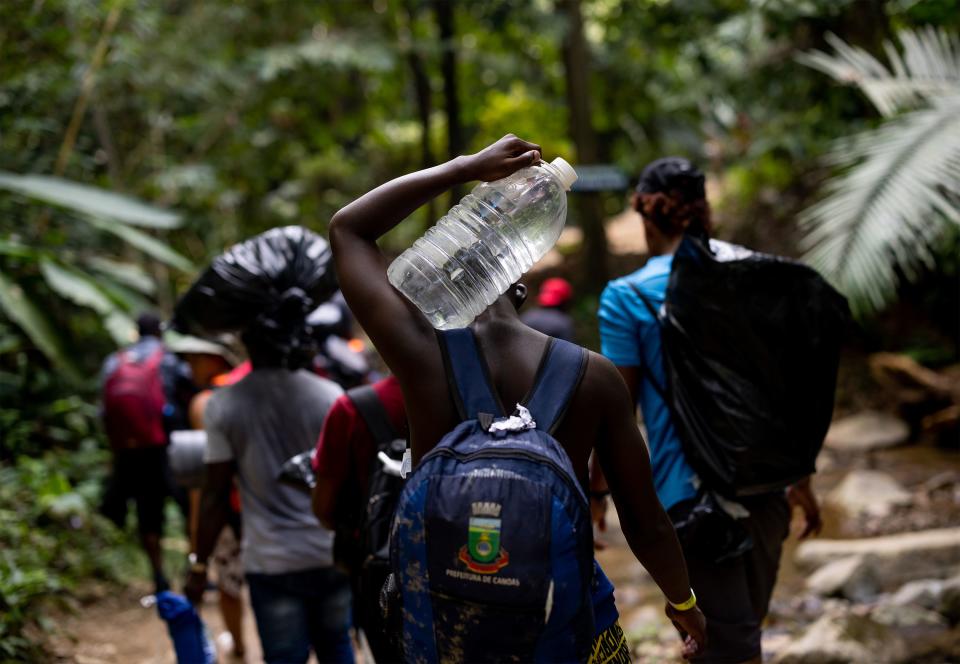A crucible of dreams
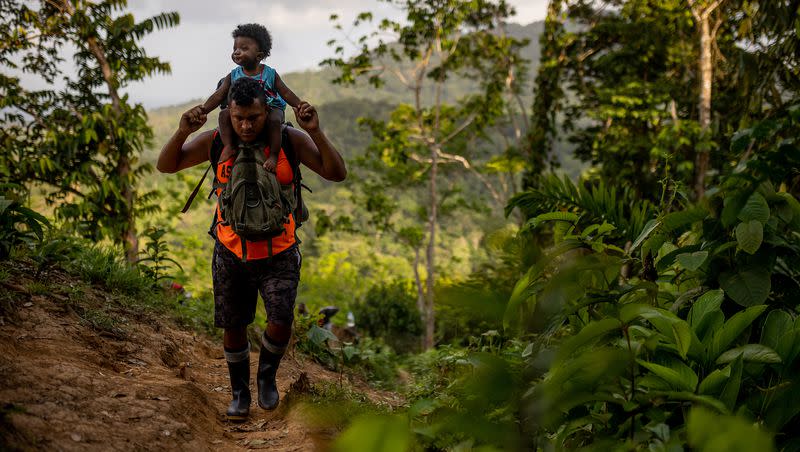
It’s Sunday, and as the roosters crow and his small coastal community stirs to life, Hernan Dario Loaiza Aguirre becomes the father of Necoclí. First, he puts on his alb, a flowing, white undergarment, before tying a cincture around his waist. Then with some help from the nuns, slides on his final vestment, a piercing green robe. At 6:55 a.m., the church bells ring, and Father Hernan takes a seat before his congregation. Towering behind the 62-year-old priest is Jesus nailed to a cross, lit up by red LED lights.
“We should be nice, and courteous and show mercy to the migrants here,” he tells those gathered inside Our Lady of Mount Carmel Parish. This is Father Hernan’s second mass in Necoclí, Colombia, a new assignment that will test him, perhaps like no other in his decadeslong tenure with the Catholic Church.
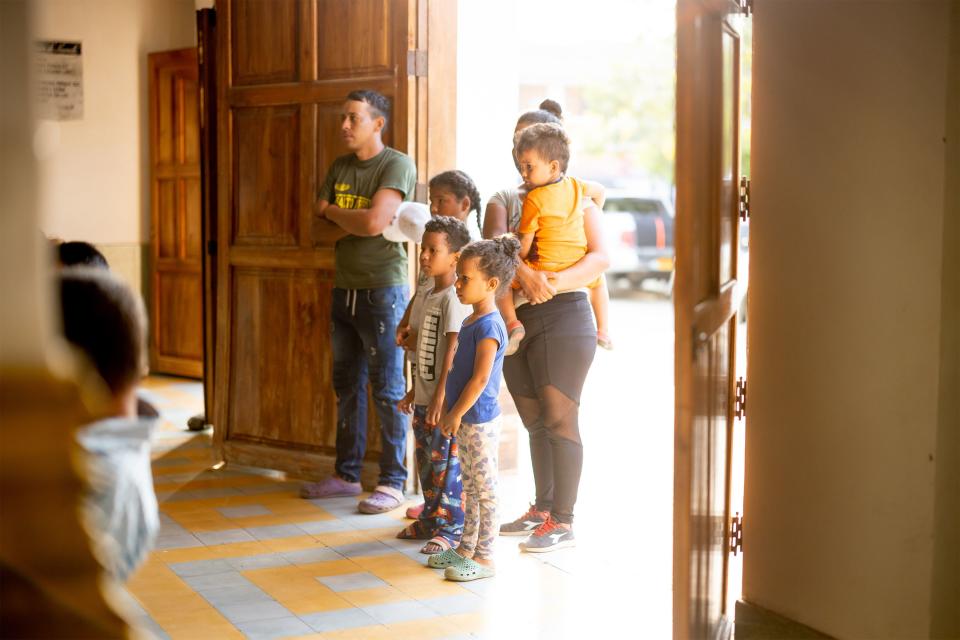
A family of Venezuelans quietly slips in during a prayer, and finds an empty row of pews in the back. They are easy to spot, their tattered T-shirts and worn, dusty pants in stark contrast with the locals dressed in their Sunday best. Nervous. Sad. Anxious. They’re grown accustomed to being told they don’t belong.
They arrived in Necoclí about a week ago. Soon, they’ll be hiking to Panama via the Darién Gap, the one asphalt-less blank in the Pan-American Highway — the grand highway that stretches from the southern tip of South America to Alaska — and only accessible by foot. For years, the Darién was considered so dangerous that only the most desperate attempted to cross, most trying to make it to the U.S. border and request asylum. In the last decade, it’s become a migrant highway, starting with unrest in Venezuela and Haiti and worsened by economic turmoil caused by Covid-19. Just a decade ago, Panama reported 3,078 arrivals from the Darién in a year. By 2022, a quarter of a million people were braving the same jungle, 16 percent of them children. They come from all over the world, in a dogged pursuit of the American dream.

The Venezuelan family now taking in Father Hernan’s sermon can only pray they will not count among the unknown number who will never make it out, suffering health complications, swept away by rivers or fatally injured from a fall. Something as benign as a sprained ankle can leave a person stranded, and they’ll succumb to starvation or disease. Night raids from criminal groups — one migrant called them “purges” — happen with such frequency that families will often sleep in separate tents so their children are left with one surviving parent. The United Nations confirmed the deaths of 36 migrants in 2022, but admits the data “presents only a small fraction of the true number of lives lost.” Guides claim the annual death toll in the Darién is over 1,000. Those who survive are often traumatized by the desperation, violence and sexual assault. The latter is so common that women routinely stain their hygiene products and undergarments with tomato sauce to dissuade predators.
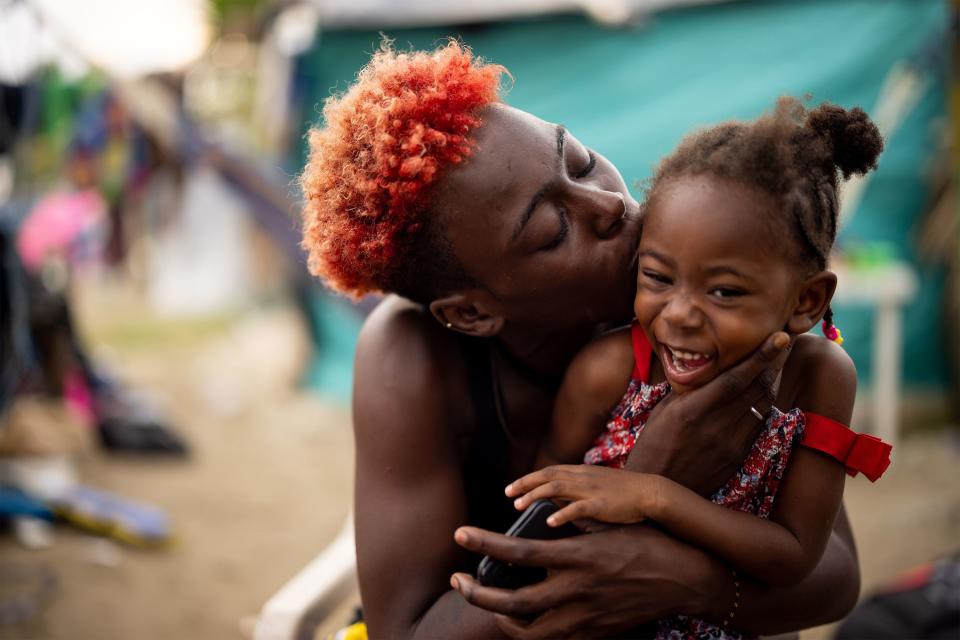
As recently as February, about 5,000 migrants were living in Necoclí, the gateway to the Darién and the seductive promises of opportunity beyond. From there, boats take them across the Gulf of Urabá to Capurganá, a small, remote tourist village and the last semblance of civilization before the long march through the jungle. The ride costs money that many migrants don’t have. So they remain in Necoclí and work odd jobs, saving a few dollars each day in hopes to one day buy a ticket.
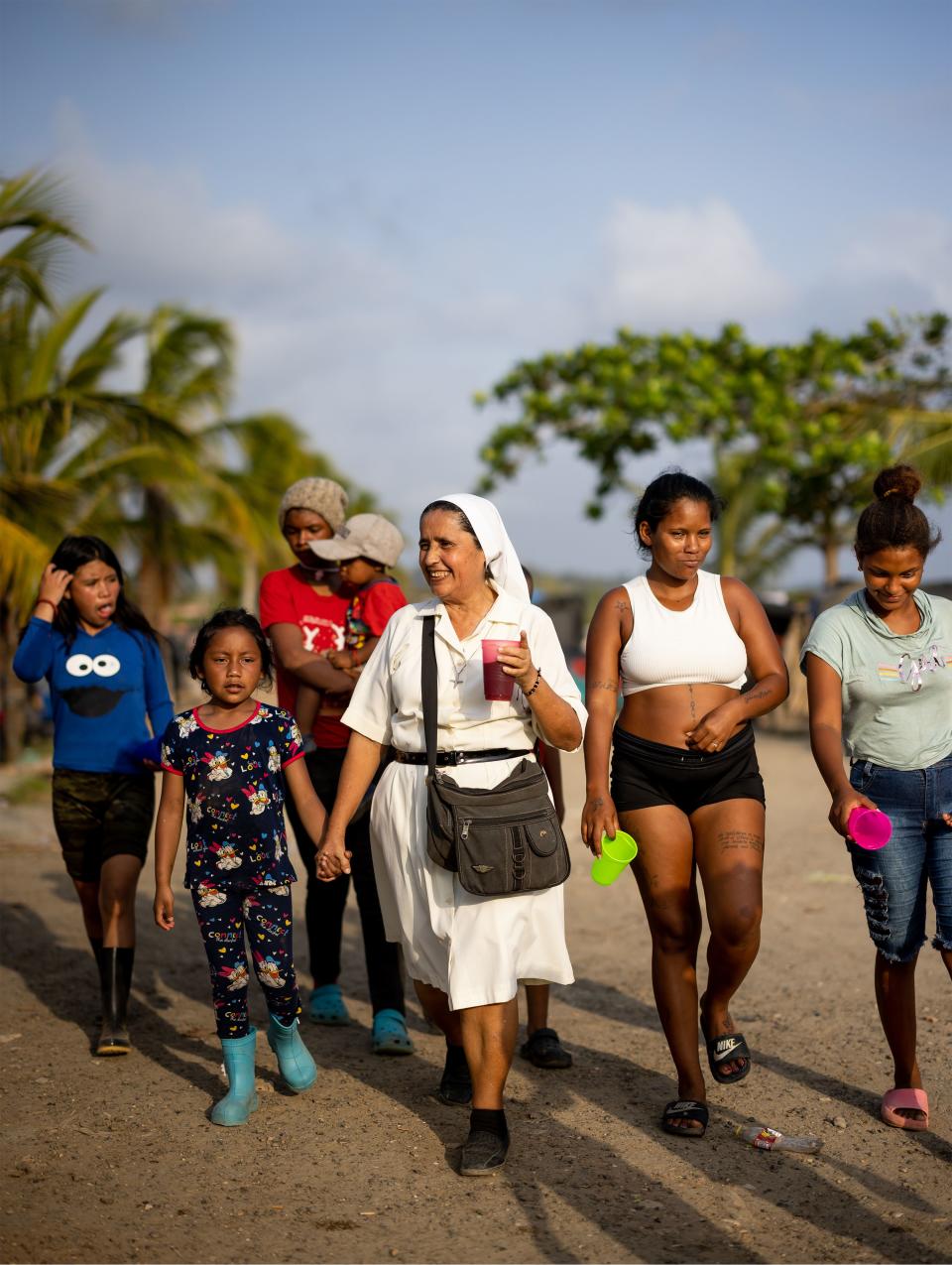
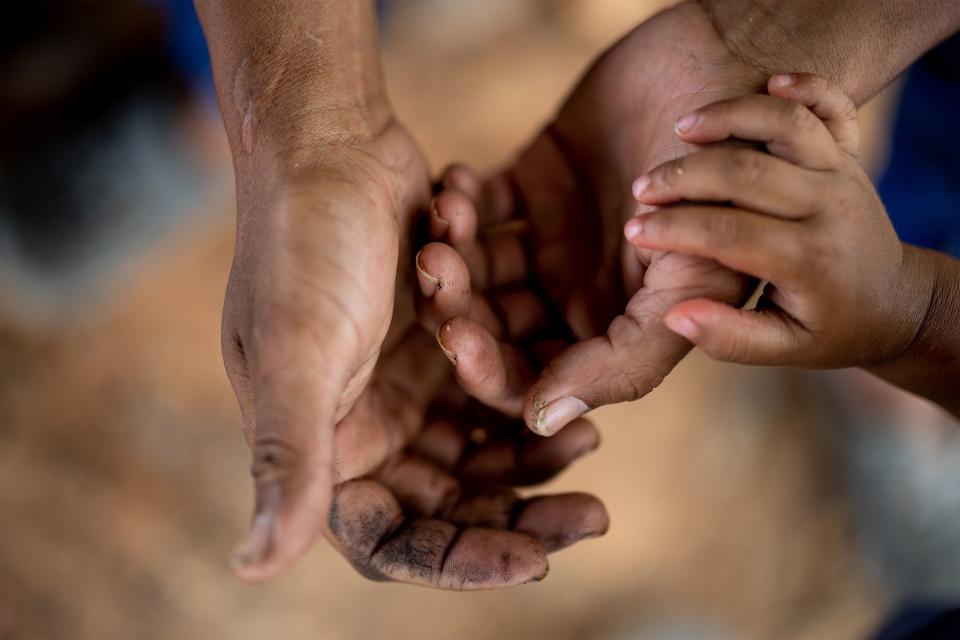
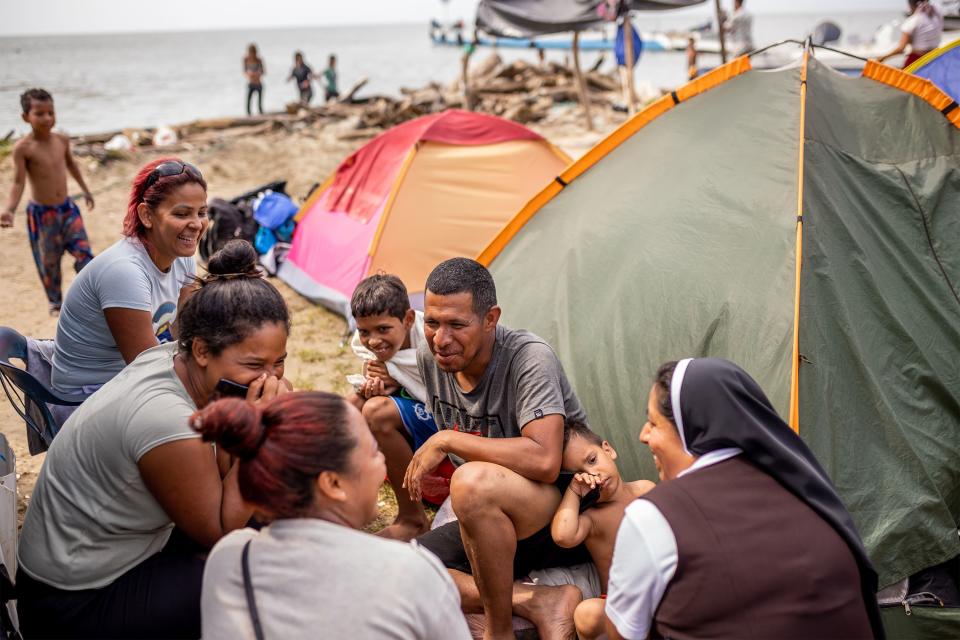
Many of those who remain camp out on the beach in squalid conditions — families of 10 living in cheap, four-person tents, while others simply sleep on the ground. Among the beach’s inhabitants on a recent afternoon was Manuel, a blind man abandoned by everyone in his group except his brother. Carlos and Scarlett, a college-educated husband and wife, traveling with their 19-year-old pregnant daughter, had been stuck in Necoclí for months. Ester, a Haitian mother, feared the lump in her chest could be cancer. Sofia, an 11-year-old Venezuelan traveling with her family, dreamt “of being president when I grow up, so I can help all the poor people.”
In Necoclí, the American dream that once seemed possible for many festers. Many women resort to prostitution. Children go hungry. Families lose hope. In many cases, one parish stands between these migrants and irrevocable destruction.
In Necoclí, the American dream that once seemed possible for many, festers. One parish stands between those dreamers and irrevocable destruction.
The Head of Our Lady of Mount Carmel is quiet, unless you ask the right questions. Solemn, unless he sees the right people. His face is weathered and eyes intense. Father Hernan has seen the region’s violence and chaos firsthand.
He was a 26-year-old seminary student when, in the late 1980s, Marxist guerrillas kidnapped him and his peers, holding them in a small village in the mountains of northern Colombia. “You are the opium of the people, the scourge of the community,” they shouted at the group. “You are in charge of keeping people asleep, so that people don’t wake up.” They held the students hostage overnight, and questioned them. Father Hernan didn’t waver. “We are the ones who wake up the people and prepare them to claim their rights,” he told them. “We work to humanize people.” By 11 a.m. the following day, after a ransom was paid, the students were let go.
It was an experience that would shape the young Hernan and embolden his beliefs. “As a church, our service is for the people,” he says now. “All people.”
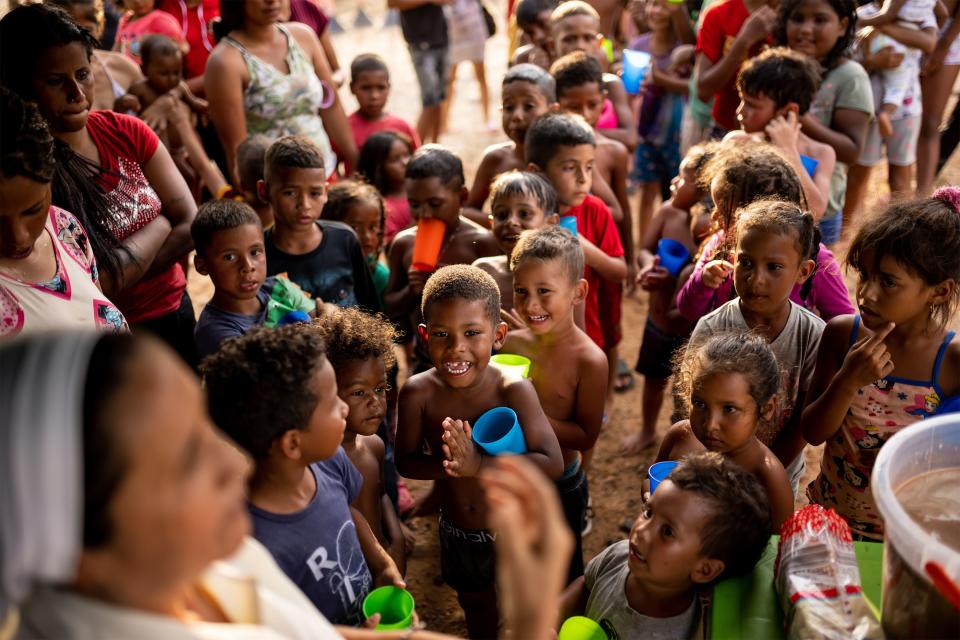
His new assignment will put that philosophy to the test. A few months ago, he replaced Father Henry Lopera, who, in 2020, pivoted the parish’s efforts to meet the global migration crisis, directing nuns to frequent the migrant camps to administer medical needs, help with housing and employment and serve hot meals as frequently as the church’s coffers would allow. Now it’s up to Father Hernan to navigate the local government and international organizations; act as mediator between local businesses, drug cartels and migrants; and take the reins of a church that runs on a shoestring budget. It’s a daunting task, with a responsibility that carries immense weight. If the church ceased its efforts today, families will go hungry tomorrow.
Even when migrants do get through the Darién, their hardship is far from over. Recently, months after passing through Necoclí, an Ecuadorian family of three attempted to cross the Rio Grande, near Laredo, Texas. The U.S. was finally in reach. But as they crossed the river, the child started to sink.
“They didn’t know how to swim,” Father Hernan says, disheartened, like he watched the scene unfold himself. The father tried to rescue his son, handing him to the mother. She and the child lived. The father drowned. “They were being charged $28,000 by smugglers in Mexico. That’s enough to start a business and buy property in Colombia. But their connection to the American dream is such that they can’t be convinced.”
Two days later on a humid, overcast morning, the crowd descending on the docks of Necoclí has grown to over 400. Spanish, French, Creole, Chinese and Pashto from the few Afghans in the crowd blend together in a chaotic mix of languages and cultures. It’s a scene that plays out every day, and a few locals watch from across the street with indifference. Down the street, reggaeton music is still playing as a group of partygoers stumble home.
Some migrants wear nice backpacks, their tents and sleeping mats rigged to the outside, while others lug cheap, blue bags with the U.N. Refugee Agency logo plastered on the front. The majority carry their belongings in black trash bags duct taped at the top to keep water out. Vendors, many of them migrants themselves trying to save up money for the boat ride, shuffle through the crowd selling last minute supplies — a waterproof phone case, machetes, rubber boots, tents and ponchos. Other migrants loiter, looking for a last-minute opportunity to sneak aboard.
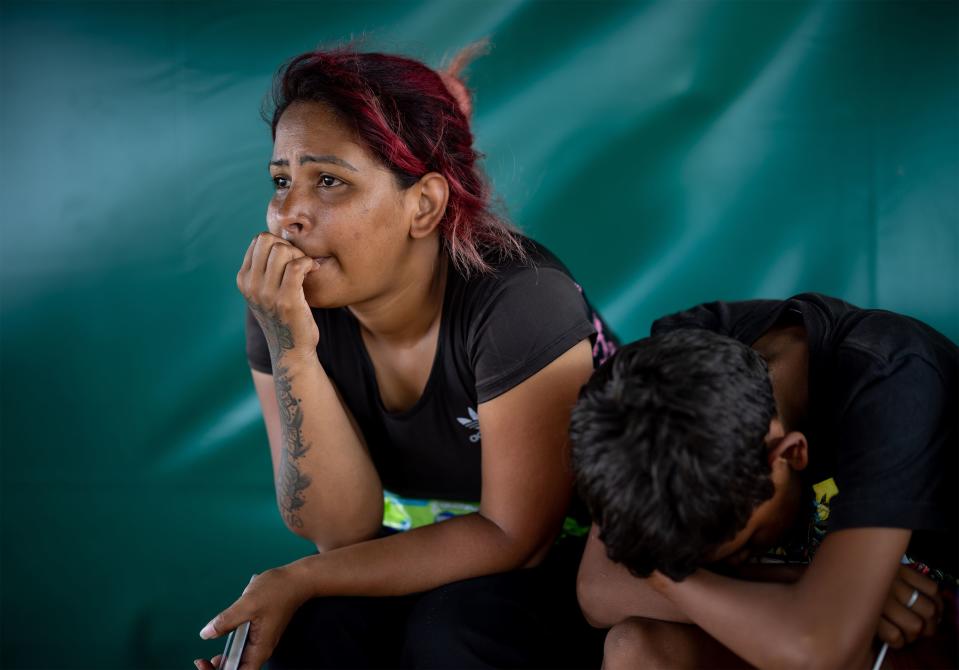
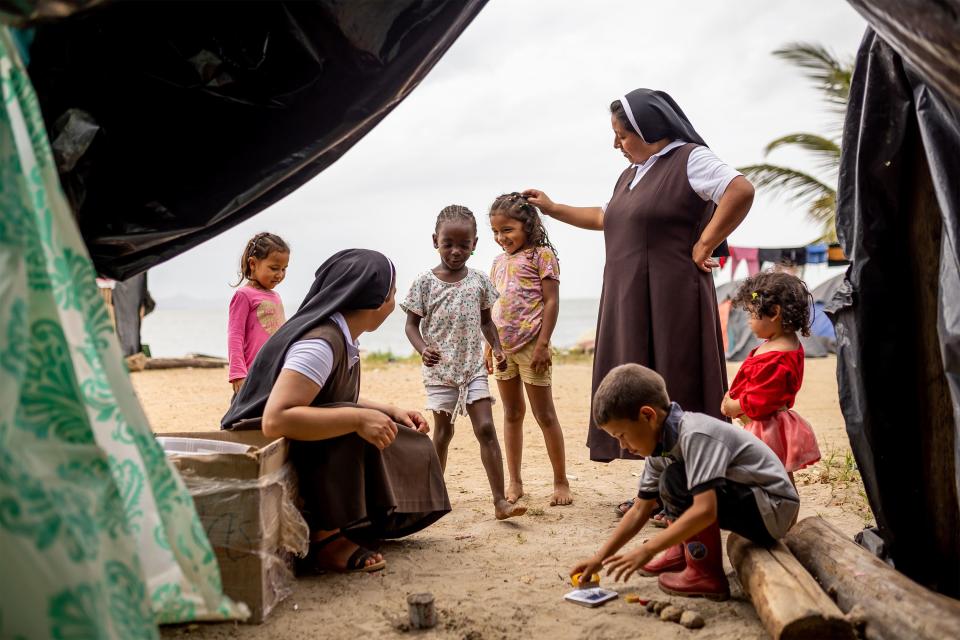
What’s most jarring are the dozens, likely hundreds, of kids. There are infants wrapped up in blankets, unable to walk, sobbing toddlers and adolescents wiping sleep from their eyes. There are mothers breastfeeding, and fathers yelling out instructions to their sons. A young Haitian boy excitedly pets every stray dog that wanders his way.
A photographer and I had spent several days in Necoclí at this point, and the majority of the migrants we met knew what they’re getting themselves into. But there are hundreds of new faces in the crowd today, some who arrived that morning. Dozens of people are wearing cheap flip flops or knockoff crocs that won’t last the first mile of the trail. I wonder how many people truly know what dangers lie ahead, and I can’t shake the same, grim thought: Who here will die in the jungle?
For years, the Darién was considered so dangerous that only the most desperate attempted to cross. In the last decade, it’s become a migrant highway.
At 8:30 a.m., after a teeth-rattling ride across the Gulf of Urabá, the boat drops us at Capurganá. The tiny village is sandwiched between the dramatic mountains of the Darién and the turquoise waters of the Colombian Caribbean. Our guide meets us at the dock, his small Bose speaker blasting reggaeton and deep cuts from Bob Marley. He’s really a human smuggler, but they prefer to be called “guides.” Tall and lanky with an unkempt afro and eyes constantly at half mast, he goes by Rambo, “because (of) what I can do in the mountains,” he says. A former soldier in the Colombian army, Rambo spent a few years scraping together a living by taking tourists on guided boat trips. Now he guides a different type of trip.
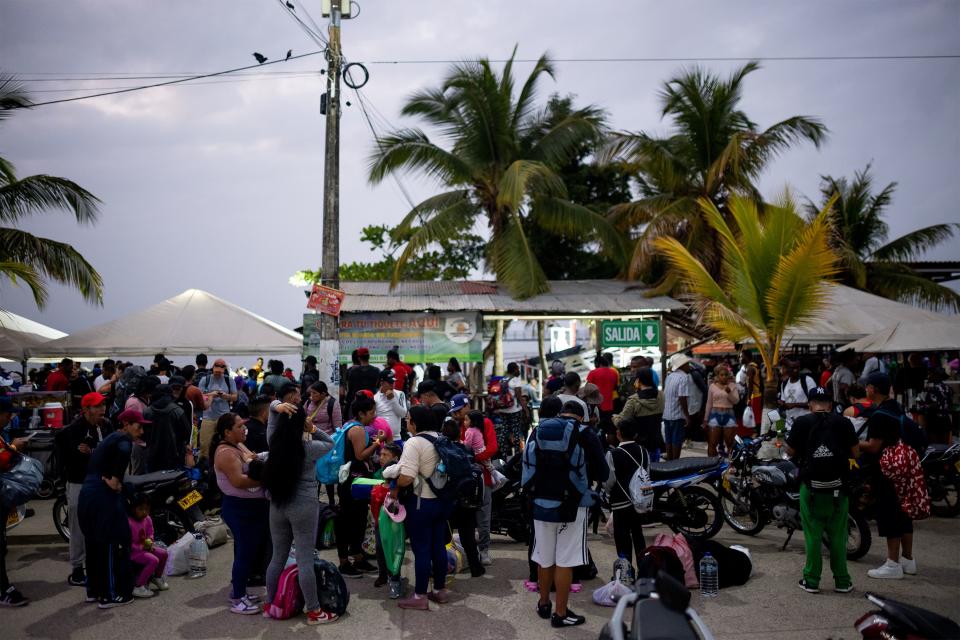
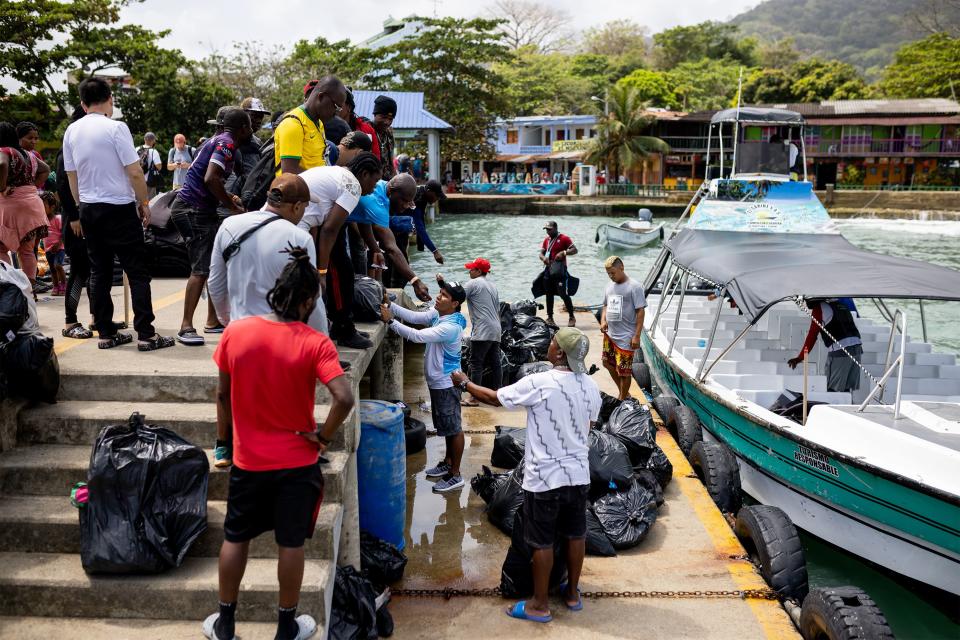
Today, we’re tagging along with 17 Haitian migrants, five of them children. As a guide gives the group instructions, a Colombian military helicopter buzzes overhead, a machine gunner hanging over the side watching our group. It’s a reminder that the area is still considered a conflict zone. Just two years ago, 22 helicopters and 500 Colombian soldiers descended on the jungle near Capurgana to arrest notorious paramilitary leader Dairo Antonio Úsuga, or Otoniel, who now sits in an American prison cell.
His cartel, the Clan Del Gulfo, still controls the Colombian routes into the Darién. It’s one of the most powerful and violent groups in the country, yet for the migrants, it offers a relative level of safety through its vast network of guides and camps. The cartel members we’re with today pay the helicopter no mind.
Soon we’re on a rocky path winding through the dusty slums of Capurganá, and into the jungle. There are a lot of smiles at first. Most of the migrants have been anticipating this moment for months, scraping funds together with what little work they could find and sleeping in the miserable camp in Necoclí. Now, on the trail, America has never felt so close. But reality soon sets in.
Within 20 minutes, we’ve walked through two rivers, and by the end of the day, I’ll lose count. Within two miles we reach the first hill of many, so steep in sections that I find myself crawling on all fours. The trail is rutted from the thousands of migrants who came before us, creating a channel that comes to my waist. Just a few miles in, the tattered remnants of shoes litter the trail. “That’s how it starts,” Rambo tells me, the “it” referring to death. “They lose their shoes, then they injure their feet.”
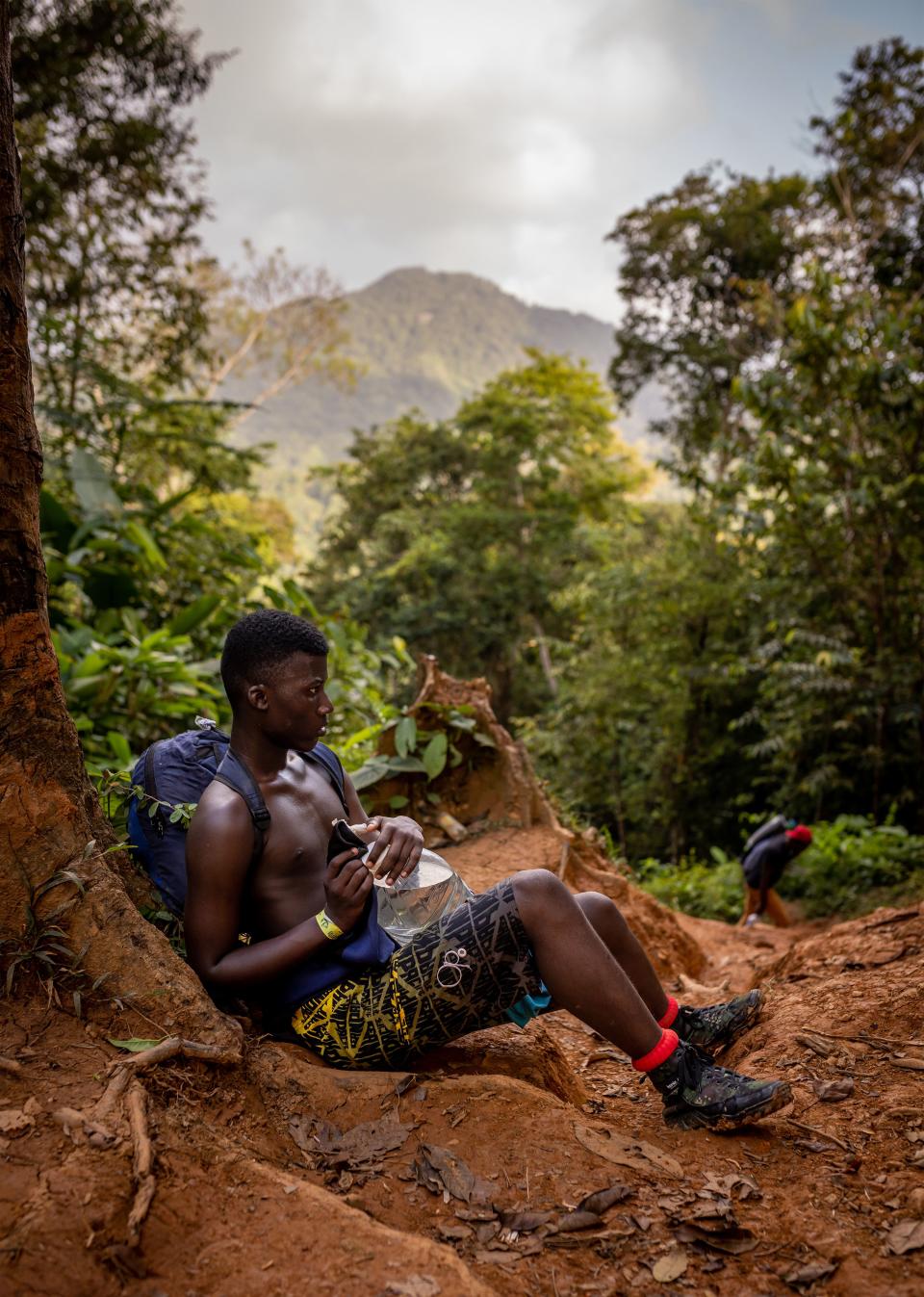
Rambo pushes us to the top in front of the group, giving him a few, uninterrupted minutes to smoke a joint in peace. He looks off into the jungle, and his smile fades. “There’s a Venezuelan mother and her kids who have been lost for five days in Panama,” he says. “Where are the helicopters and search parties for her?”
I ask how many times he’s hiked into the Darién. “My whole life,” he says. “I’ve lost count.” He looks down the hill, and barks at the migrants: “It’s just one more steep climb, that’s it.”
“One more steep climb.” What a lie. By the end of the day, we climbed well over 1,000 vertical feet. And over the next week, as the migrants go deeper into the jungle, more perils await. The mountains grow taller, the rivers deeper, the rain unrelenting.
The group moves slowly. Hours pass and the sun sinks below the treeline, casting a golden glow through the jungle in a beautiful yet stark reminder that light is fading fast. Soon, we’re on the final descent to camp, and at 5:45, the rudimentary infrastructure of a camp emerges, hidden in a lush, green valley.
It’s a surreal example of the cartel’s impressive organization in the Darién. The camp is roughly the size of a football field, covered almost entirely by a tarp shelter providing relief from the rain. For $1, you can purchase two hours of Wi-Fi. For $10, you can buy a massive plate of rice, beans and beef cooked over a fire. Gas generators hum, powering overhead lights and a refrigerator that sells bottled water, Gatorade and beer. In one corner, a group of cartel soldiers huddle around a large, flatscreen TV watching soccer.
Everything is damp, and the bugs are relentless. I see a few centipedes that rival my middle finger in length, and later that night, a guide brushes a spider off my back. I don’t bother asking how big it was.
It’s 7 p.m. when I see lights appear on a mountain near camp. And in about 20 minutes, Marcos Perez, a Venezuelan, and his group stroll in. Perez and his wife and their two-year-old son, Isbel, are tired from the hike but happy to finally be on the move. They set up their tent, and Perez takes his boots off, hangs his shirt on a clothesline and lets out a deep sigh.
In the Darién Gap, something as benign as a sprained ankle can leave a person stranded, and they’ll succumb to starvation or disease.
“Tomorrow is going to be very hard,” says Roberto Gomez, a fellow Venezuelan. He sets his hammock up next to the family. “Very, very hard.”
We talk. Gomez wants to get a commercial driver’s license when he makes it to the U.S. “Cars, box (trucks), even bikes,” he says in broken English. He’s traveling alone, but has a young daughter in Caracas that he hopes to bring to the U.S. someday. And Perez, a mechanic, wants to continue working on cars. At first, he had his doubts about the journey. But his cousin in New York City reassures him.
“He insists this is the best decision for my kid. And I know it,” he tells me, smiling as Isbel runs in a figure eight, circling Gomez’s hammock and the family’s tent.
“He is really into kicking balls. And he runs around like crazy,” says Perez. I ask, maybe he’ll be a soccer player in the U.S.?
“Nah. Futbol Americano,” Gomez says with a sheepish grin and a wink.
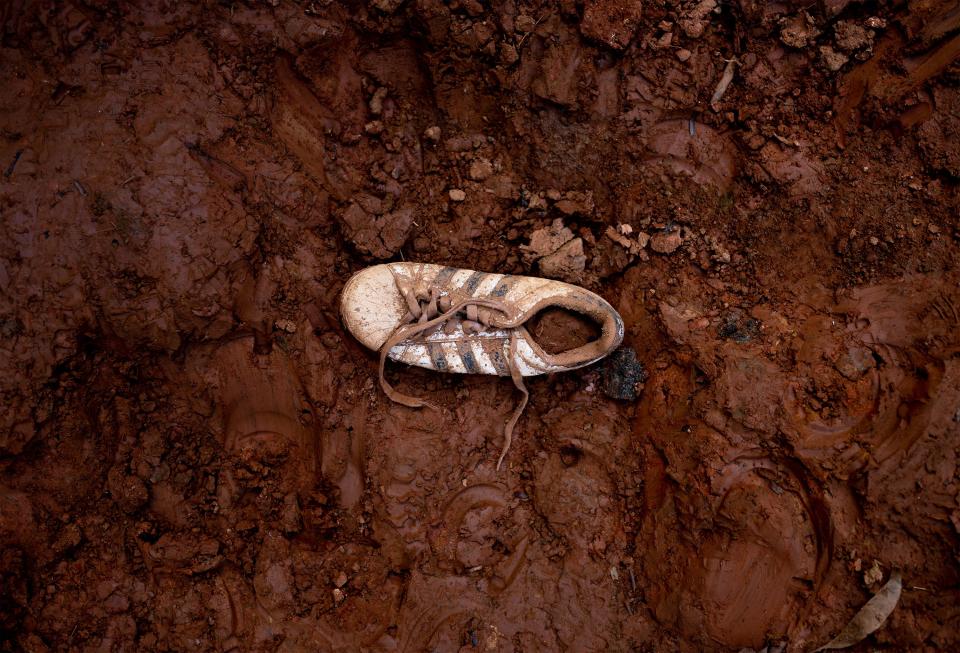
“He’s going to be a field goal kicker, that way he can do both,” Perez replies. They both smile. Soon, the generators turn off, and the lights go dark. A few kids resist sleep and cry, while a handful of migrants stand around a small campfire all night, talking in hushed tones about the journey ahead. By 5 a.m. the generators sputter to life and the camp is awake. Thirty minutes later, a guide turns on a portable speaker, and reggaeton echoes through the camp.
Perez takes the tent down, and hastily packs the backpacks. The family skips breakfast — for most migrants, dinner is the only meal in the Darién. By 5:50 a.m., a guide paces through the tents yelling “Vamanos.”
I find Perez and Gomez before they leave, shuffling anxiously, making sure every pocket is zipped and every strap fastened. Isbel is rubbing his eyes with one hand, and squeezing his mother’s arm with the other. “Good luck,” I tell them in Spanish. “Thank you,” they reply in English. In a few hours, the guides will hand them off to Indigenous groups at the Panamanian border, who will guide them through 60 more miles of hell. At 6 a.m., the migrants line up single file and enter the thick, verdant canopy that swallows them in seconds, like they were never there.
Back in Necolí with the din of church bells still ringing in our ears, signaling an end to mass and the start of the day, Father Hernan had told me about the anxiety he feels for those who embark on that perilous journey. “We are talking about people exposed to the unimaginable dangers,” he said. The obstacles standing between the migrants and refuge in the U.S. seem insurmountable. He was referring to Venezuelan families in general, though he could have been talking about Roberto Gomez, or about Marcos Perez and his wife and little Isbel, or any one of the thousands who pass through town each year.
Feeling cautiously hopeful despite those insurmountable obstacles, I stayed in touch with many of the migrants I met. One Haitian woman in our group through the jungle texted me from Panama, from the other side of the Darién, and described the rest of her trek. “A horror movie,” she said, “In the jungle we saw corpses everywhere … in the mountains, in the rivers. People who apparently couldn’t walk anymore and sat down to wait for death.”
Weeks later, I got a surprise WhatsApp message from Gomez. He was in Honduras, in good health and spirits, his dreams of becoming a truck driver in the U.S. getting closer by the day. What about Marcos Perez? What about Isbel, so destined to be a field goal kicker? “I separated from them in the jungle,” Gomez typed back. “I don’t know where they are or how they are.”
Seconds later, I messaged Perez. I still haven’t heard back.
This story appears in the April issue of Deseret Magazine. Learn more about how to subscribe.
